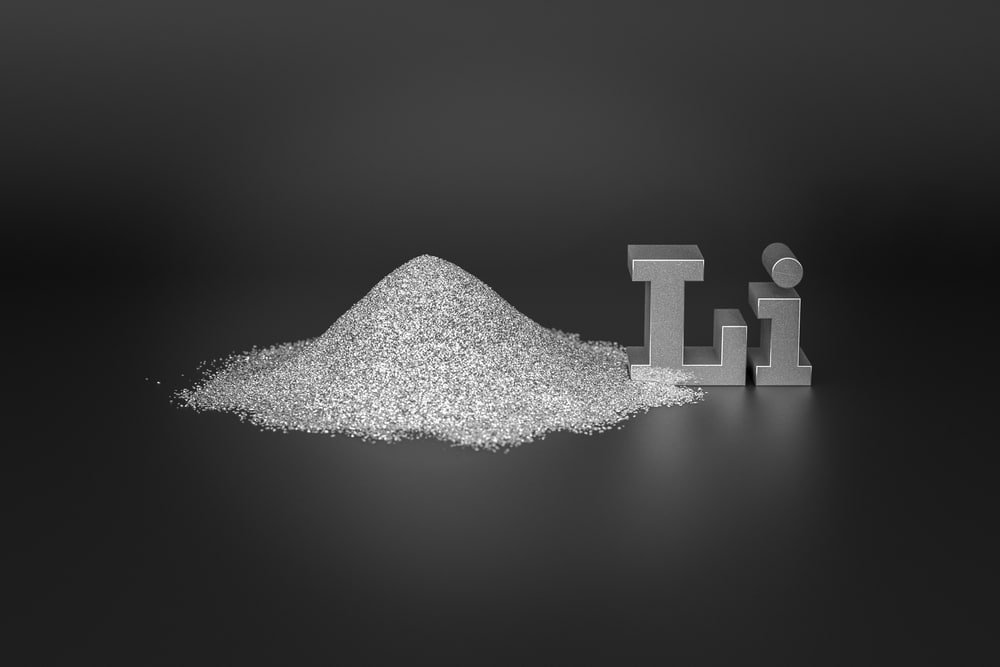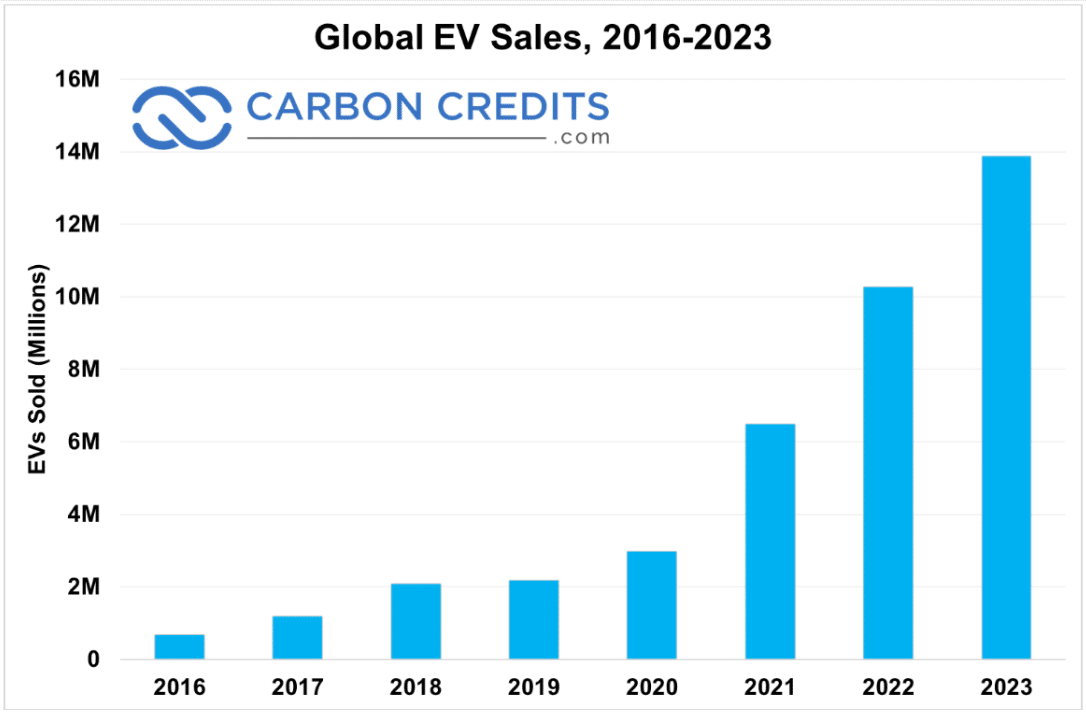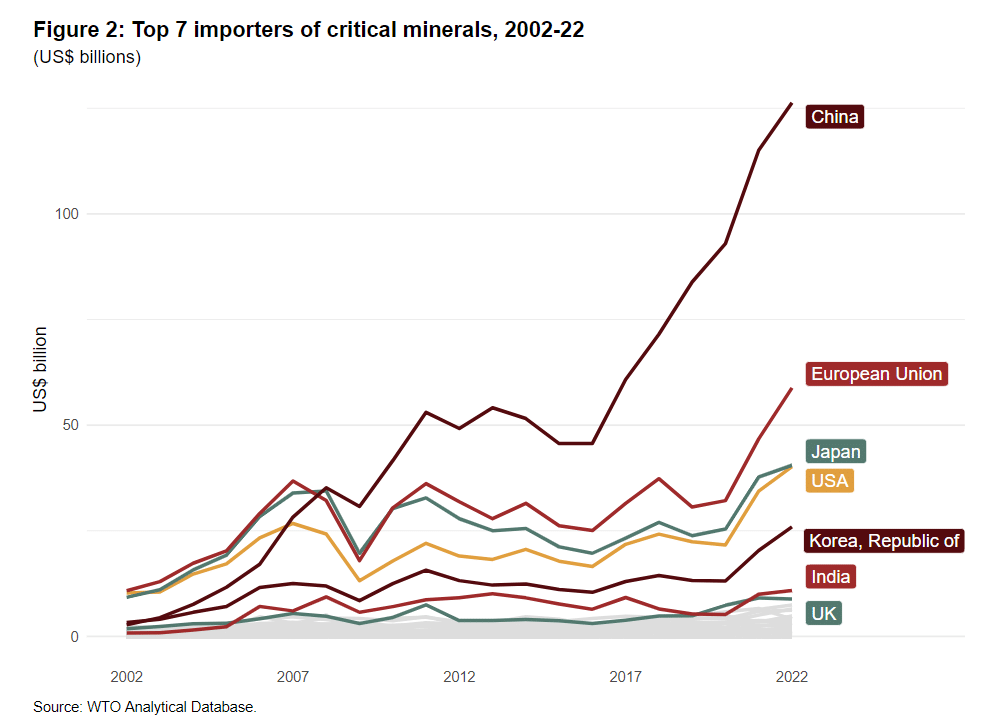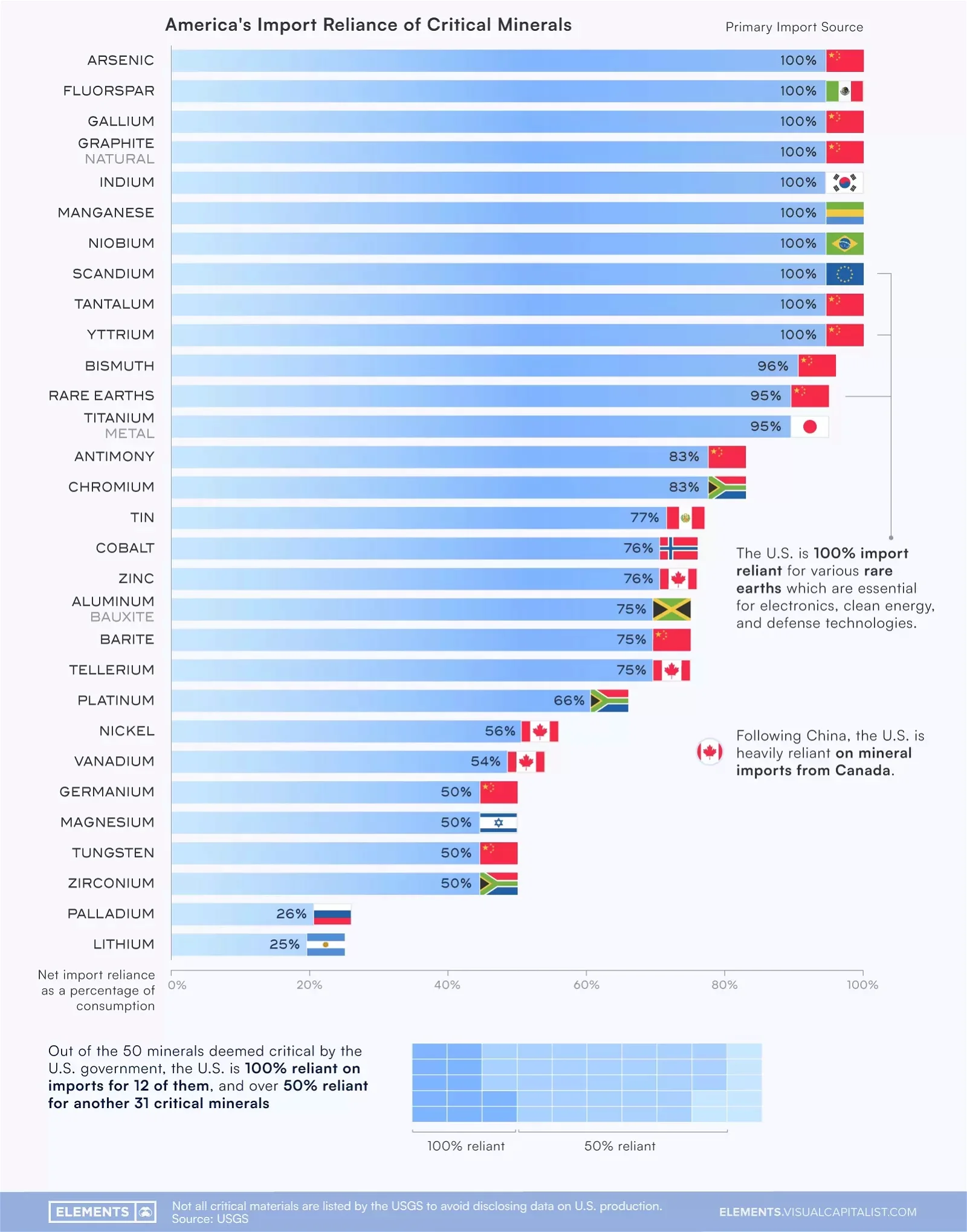Critical minerals, including lithium, nickel, cobalt, copper, and rare earths, are essential in the manufacturing of clean energy technologies, spanning from wind turbines to electric vehicles (EVs). Over the last two decades, the annual trade in energy-related critical minerals has surged from $53 billion to $378 billion.
However, US imports of lithium materials and critical minerals, crucial components for EV batteries, saw a decline in 2023 compared to the previous year, per data from S&P Global Market Intelligence. This reflects the subdued demand for EVs.
In 2023, imports of processed and refined lithium totaled 17,130 and 57,210 metric tons, respectively, marking decreases of 2.4% and 20.5% compared to 2022, as reported by Market Intelligence data.
US processed lithium imports saw an uptick in the 4th quarter of 2023 following a rise in the 3rd quarter. However, import levels remained below the record high set in the March quarter of the same year.
The first quarter of 2023 witnessed a record in US imports of lithium-ion batteries as seen in the chart below. This is primarily due to market anticipation of robust EV sales for the year ahead and the impending rise in lithium prices.
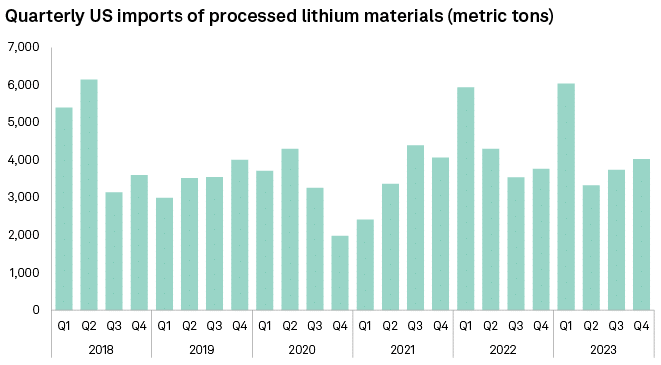
Factors Behind US Import Decline of Critical Minerals
Analysts attribute the subdued sales growth in Europe and the US during the second half of 2023 to various factors. These include a higher interest rate environment and a greater price premium for battery electric vehicles compared to internal combustion engine vehicles.
However, there are expectations for an uptick in EV demand in 2024.
According to a February report by S&P Global Mobility, the development of battery-electric vehicle (BEV) sales in the US is expected to continue to grow through 2024. This projection nearly doubles the number of BEV models available by the end of the year compared to 2022.
While it’s true that growth in the global EV market has been decelerating, it’s crucial to maintain the right perspective. In 2021, EV sales more than doubled, experiencing an extraordinary growth rate of nearly 120%.
Remarkably, in January of this year, over 1.1 million EVs were sold worldwide, compared to 660,000 sold during the same period last year, marking a new monthly global sales record. This represents a remarkable 69% year-over-year growth, significantly surpassing the average growth rate observed in the previous year.
This growth trend in EV sales means lithium production must also keep up.
Trends in US Lithium Imports and Battery Market
In the fourth quarter of 2023, US imports of processed lithium totaled 4,026 metric tons, marking a 6.8% increase year over year. Market Intelligence data reveals that Argentina and Chile contributed 51.6% and 46.1% of these imports, respectively.
Raw lithium undergoes processing and subsequent refinement into chemicals suitable for use as cathode materials and electrolyte solutions in batteries. During the December quarter, the US imported 15,960 metric tons of refined lithium. That represents a 3.5% increase from the 15,426 metric tons imported during the same period in 2022.
Canada accounted for 63.4% of the US imports of refined lithium in the fourth quarter, according to the data.
According to forecasts from Commodity Insights, China would see a decline in its market share in lithium-ion battery production between 2023 and 2030.
Meanwhile, North America’s lithium-ion battery capacity is anticipated to grow at a rate of 22% during this period. The bulk of this growth would take place in the United States, with two projects also slated for Canada.
- READ MORE: Accelerating Lithium Demand and Construction Surge in US and Canada
Additionally, US imports of critical minerals amounted to 612,590 metric tons in 2023. That represents a significant decline of 39.1% year over year.
US Dependency in Critical Mineral Imports
Market Intelligence data further reveals that critical mineral imports totaled 195,805 metric tons in the 4th quarter of 2023. That accounts for a 6.6% increase from the 183,621 metric tons recorded in the fourth quarter of 2022. Notably, Gabon accounted for 47.1% of US imports of critical minerals during the same quarter.
Globally, trade in critical minerals has experienced substantial growth over the past two decades, with an average annual growth rate of 10%. The value of imports has nearly doubled in five years, soaring from $212 billion in 2017 to $378 billion in 2022, according to World Trade Organization data.
Particularly noteworthy is the significant increase in trade in helium and lithium which showed impressive annual growth rates of up to 53% during the same period.
In 2022, China emerged as the largest importer of critical minerals, comprising 33% of the global total. Following China, the European Union accounted for 16%, while Japan and the United States both stood at 11%.
The transition towards a more sustainable future necessitates access to various critical minerals vital for transitioning to the green economy. However, the US currently faces a significant reliance on imported nonfuel minerals, potentially exposing vulnerabilities in the nation’s supply chains.
According to data from the U.S. Geological Survey (USGS), the United States is entirely dependent on imports for at least 12 key minerals identified as critical by the government. Notably, China emerges as the primary source of imports for many of these critical minerals, as well as numerous others.
The graphic illustrates America’s import dependence for 30 key nonfuel minerals, highlighting the primary import sources for each mineral.
The decline in US critical minerals imports amidst EV market fluctuations underscores supply chain complexities. Despite subdued demand in 2023, projections suggest future growth. Global trade in critical minerals surges, emphasizing the need for strategic domestic resource management to secure a stable supply for the green economy.

